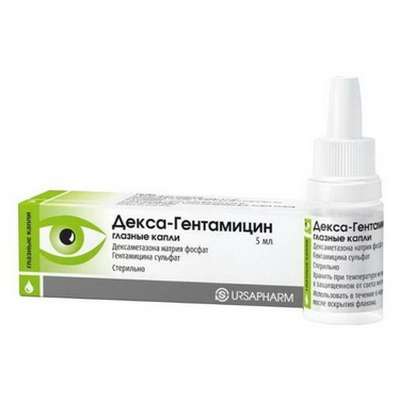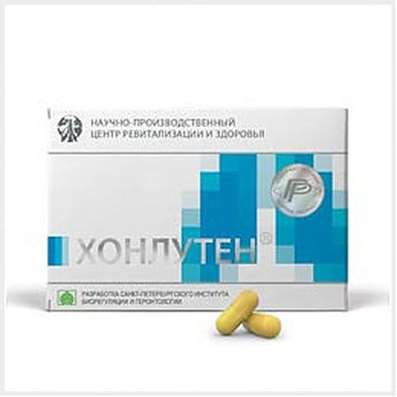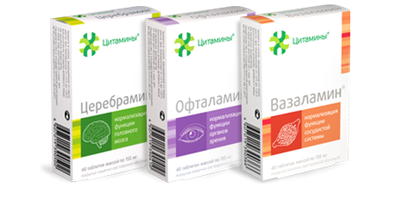Instruction for use: Spitomin
I want this, give me price
Trade name of the drug – Spitomin
Active substance: Buspirone (Buspironum)
Chemical rational name: 8- [4- [4- (2-pyrimidinyl) -1-piperazinyl] butyl] -8-azaspiro [4.5] decane-7,9-dione (and hydrochloride)
Dosage Form: tablets,
Compositionactive substance:
buspirone hydrochloride 5 mg / 10 mg
Excipients: lactose monohydrate - 55.7 / 111.4 mg; MCC; sodium carboxymethyl starch; magnesium stearate; Colloidal anhydrous silica
Description of Spitomin
Tablets 5 mg: white or almost white, round flat, bevelled, engraved "E 151" on one side and Valium - on another; odorless or with a faint characteristic odor.
Tablets 10 mg: white or almost white, round flat, bevelled, engraved "E 152" on one side and Valium - on another; odorless or with a faint characteristic odor.
Pharmacotherapeutic group:
Anxiolytic (tranquilizer) [Serotonergic agents]; DOPA-minomimetics;
Anxiolytic (tranquilizer).
ATX Code
N05BE01 Buspirone
The nosological classification (ICD-10)
F10.3 abstinence: Alcohol withdrawal syndrome; abstinence symptom; Abstinence syndrome in alcoholism; abstinence; alcohol abstinence; alcohol withdrawal; Alcohol abstinence; Alcohol withdrawal syndrome; withdrawal disorder; withdrawal state; alcohol withdrawal syndrome; withdrawal syndrome; The syndrome of alcohol abstinence; alcohol withdrawal syndrome; Status of abstinence.
F32 Depressive episode: adynamic subdepression; Astheno-adynamic state subdepressive; Asthenic-depressive disorder; Asthenic-depressive state; Asthenic-depressive disorder; Asthenic-depressive state; Major depressive disorder; Sluggish-apathetic depression with inhibition; Double depression; depressive pseudodementia; Depressive disorder; Depressed mood disorder; Depressive disorder; mood Depressive disorder; the doldrums; Depressive disorders; Depressive syndrome; Depressive syndrome larvirovanny; Depressive syndrome with psychosis; masked Depression; Depression; exhaustion Depression; Depression with symptoms of lethargy within cyclothymia; Depression smiling; involutionary depression; involutionary melancholy; involutional depression; Manic-depressive disorder; masked depression; Melancholic attack; Neurotic depression; Neurotic depression; Shallow depression; Organic depression; Organic depressive syndrome; Simple depression; Simple melancholic syndrome; Psychogenic depression; Reactive depression; Reactive depression is a moderately severe; psychopathological symptoms; Reactive depression; Reactive depression; Recurrent depression; Seasonal depressive syndrome; Senesto-pathic depression; senile depression; Symptomatic depression; somatogenic depression; cyclothymic depression; Exogenous depression; lypothymia; Endogenous depression; The endogenous depressive syndrome.
F33 Recurrent depressive disorder: Major depressive disorder; Secondary depression; Double depression; Depressive pseudodementia; Depressed mood disorder; Depressive disorder; Depressed mood disorder; Depressive state; The depressive syndrome; Depression masked; Depression; Depression smiling; Involutionary depression; Involutional depression; Masked depression; Melancholic attack; Reactive depression; Reactive depression is a moderately severe psychopathological symptoms; Reactive depression; Exogenous depression; Endogenous depression; Endogenous depression; Endogenous depression; The endogenous depressive syndrome.
F41.0 Panic disorder [episodic paroxysmal anxiety]: Panic; Panic attack; Panic disorder; Panic disorders; Panic condition.
F41.1 Generalized anxiety disorder: Generalized anxiety; Generalized anxiety disorder; Panic reaction; Anxiety disorder; Phobic neurosis.
F45.3 Somatoform dysfunction of the autonomic nervous system: Cardioneurosis; Cardiovascular neurosis; Neurocirculatory dystonia syndrome; Somatic - autonomic disorders; Somatic-vegetative complications.
G90 Disorders of autonomic [autonomous] nervous system: angiodystonia; vasovegetative manifestations; vasomotor dystonia; vegetative dystonia; autonomic dysfunction; vegetative lability; Vegetative-vascular disorders; autonomic dysfunction; Vegetative-vascular dystonia; Vegetative-vascular disorders; vasoneurosis; vegetative-vascular disorders; Dystonia vegetovascular; Dystonia neurocirculatory; neuro disorder; Cardiopsychoneurosis; Neurocirculatory dystonia of hypertensive type; Primary neurovegetative syndrome; The syndrome of vegetative dystonia.
Pharmacological Properties of SpitominPharmachologic effectPharmacological Effects - antidepressive, anxiolytic.
Pharmacodynamics
Anxiolytic (tranquilizer) means a number of non-benzodiazepine, also have antidepressant effects. In contrast to classical anxiolytics, has no antiepileptic, sedative, hypnotic and muscle relaxant effects.
The mechanism of action is associated with the effect of buspirone on the serotonergic and dopaminergic systems. Selectively blocking presynaptic dopamine receptors and increases the rate of excitation of the midbrain dopamine neurons. In addition, buspirone partial agonist is a selective 5-HT1A serotonin receptors. Buspirone has no significant effect on the benzodiazepine receptors and does not affect the binding of GABA, has no adverse effects on psychomotor functions, it does not cause tolerance, dependence and drug withdrawal. It does not potentiate the effect of alcohol. By anxiolytic activity of buspirone is approximately equal to the benzodiazepines.
The therapeutic effect develops gradually and is celebrated in 7-14 days from the beginning of treatment, the maximum effect is registered after 4 weeks.
Pharmacokinetics
After oral administration, buspirone is rapidly and almost completely absorbed from the gastrointestinal tract.
Buspirone is intense first pass metabolism through the liver. Therefore the unchanged substance found in the systemic circulation at a low concentration, which has considerable individual variation. Bioavailability is 4%. Cmax plasma levels achieved after 60-90 min after administration. In healthy volunteers, buspirone has a linear (proportional to the dose) pharmacokinetics after administration of 10-40 mg. Similar pharmacokinetic parameters found in elderly patients. After a single oral administration of 20 mg of the drug in blood plasma levels of between 1 and 6 ng / ml. Approximately 95% of buspirone is bound to plasma proteins (86% - with plasma albumin, and the rest - to α1-acid glycoprotein).
Buspirone undergoes oxidative metabolism, mainly involving isoenzyme CYP3A4. Images of various hydroxylated metabolites. The major metabolite (5-OH-buspirone) is inactive. Dealkylated metabolite - 1- (2-pyrimidinyl) piperazine, 1-PP - active. Its anxiolytic activity is 4-5 times lower than that of the starting material, but in the blood plasma levels above and T1 / 2 is approximately 2 times longer than that of buspirone. After single administration of 14C-labeled buspirone, 29-63% of the radioactivity excreted in the urine within 24 hours, mostly in the form of metabolites. Approximately 18-38% of the administered dose is excreted in the feces. After a single dose of 10-40 mg of T1 / 2 of the starting material is approximately 2-3 h, and T1 / 2 is the active metabolite of 4,8 hours.
Simultaneous food intake slows down the absorption of buspirone, but by reducing dosistemnogo clearance (first pass effect) at the same time significantly increases the bioavailability of buspirone. Upon receiving the food value buspirone AUC increased by 84% and its Cmax - 16%.
Css in plasma can be achieved in about 2 days after the start of the regular reception.
Apparent Vd is 5.3 L / kg.
Buspirone is released in breast milk, but data on placental transfer are absent.
Elevated plasma levels of buspirone value and AUC, and elongation T1 / 2 can be observed with abnormal liver function. In connection with the release of unchanged substance in the bile, buspirone possible second peak plasma concentration. Patients with cirrhosis should be prescribed at lower doses or in the same doses with longer intervals.
In renal insufficiency, the clearance of buspirone may be reduced by 50%. In renal insufficiency, buspirone should be administered with caution and in reduced dosages.
Buspirone not altered pharmacokinetics in the elderly.
Indications for Spitomin
generalized anxiety disorder (GAD);
panic disorder;
autonomic dysfunction syndrome;
alcohol withdrawal syndrome (as adjuvant therapy);
Depressive Disorder - adjuvant therapy (the drug is not indicated for the monotherapy of depression).
Contraindications for Spitomin
Hypersensitivity to any component of the drug;
severe renal insufficiency (glomerular filtration rate (GFR) - less than 10 mL / min);
severe hepatic impairment (PX - more than 18);
the simultaneous use of MAO inhibitors or the 14-day period after the abolition of irreversible MAO inhibitor, or 1 day after the cancellation of a reversible MAO inhibitor;
glaucoma;
myasthenia gravis;
lactation;
pregnancy or suspected pregnancy;
age of 18 years (the safety and effectiveness of buspirone in this age group have not been proved).
Precautions: liver cirrhosis, renal failure.
Pregnancy and breast-feeding
Given the lack of properly controlled clinical trial data, the use of buspirone during pregnancy is possible only when the benefits of the drug justifies the potential risk. Women of childbearing age during treatment buspirone should use adequate contraception as buspirone safety has not been proven in pregnancy.
Buspirone is released in breast milk. Sufficient data from clinical trials of buspirone during breast-feeding are not available, so nursing mothers should not take this drug.
Spitomin Dosage and Administration
Inside, always at the same time of the day, before or after the meal (to avoid significant fluctuations in active agent concentration in the blood plasma during the day).
The drug should not be taken occasionally to treat anxiety, because the therapeutic effect of the drug develops Spitomin only after multiple dose and appears no earlier than 7-14 days of treatment.
The dose should be titrated for each patient individually. The recommended initial dose - 15 mg; it can be increased to 5 mg / day every 2 or 3 days. The daily dose should be divided into 2-3 doses. The typical daily dose of 20-30 mg. The maximum single dose is 30 mg; the maximum daily dose should not exceed 60 mg.
Special patient groups
Elderly patients. by itself does not require advanced age verification dose pharmacokinetics since buspirone does not undergo aging.
Impaired renal function. If the kidney function of the drug should be used with caution and in reduced dosages.
Abnormal liver function. If abnormal liver function the drug should be used with caution and in reduced dosages, which reduce individual doses or increase the interval between doses.
Side effect of Spitomin
Buspirone is generally well tolerated. Side effects, if they occur, usually occur early in the treatment course and then disappear, in spite of continued drug administration. In some cases, dose reduction is necessary.
To determine the frequency of side effects of the drug is used the following classification: often (more than 1/100); infrequently (from 1/100 to 1/1000); rare (less than 1/1000); very rare (<1/10000) (in many cases, in the absence of a reference agent connection with the reception of undesirable effects could not be proven drug).
From the CCC: often - pain in the chest; infrequently - syncope, hypotension, hypertension; seldom - cerebrovascular accident, decompensated heart failure, myocardial infarction, cardiomyopathy, bradycardia.
CNS: often - dizziness, headache, increased nervous irritability, sleep disturbances; infrequently - dysphoric reactions, depersonalization, dysphoria, increased sensitivity to noise, euphoria, hyperkinesia, anxiety, apathy, hallucinations, confusion, lengthening the reaction time, suicidal thoughts, seizures, paresthesia, incoordination, tremors; rarely - claustrophobia, cold intolerance, stupor, stuttering, extrapyramidal disorder, psychotic disorder.
On the part of the organs of sight and hearing: often - tinnitus, laryngitis, swelling of the nasal mucosa; rarely - blurred vision, itchy eyes, redness of the eyes, conjunctivitis, violation of gustatory and olfactory sensations; rarely - a violation of the inner ear, eye pain, photophobia, increased IOP.
From endocrine system: rarely - galactorrhea and thyroid damage.
On the part of the digestive tract: rarely - nausea, flatulence, anorexia, increased appetite, salivation, intestinal bleeding; rarely - diarrhea, burning sensation in the tongue.
With the genitourinary system: Infrequent - dizuricheskie disorders (including frequent urination, urinary retention), menstrual irregularities, decreased sex drive; rarely - amenorrhea, pelvic inflammatory disease, bedwetting, delayed ejaculation, impotence.
From the musculoskeletal system: rarely - muscle cramps, muscle stiffness, arthralgia; rarely - muscle weakness.
From the respiratory system: rarely - hyperventilation, shortness of breath, feeling of heaviness in the chest; rarely - nosebleeds.
Skin: Infrequent - edema, pruritus, flushing, hair loss, dry skin, swelling of the face, skin vulnerability, rash.
Other: weight gain, fever, weight loss, pain in the muscles and bones; rarely - alcohol abuse, loss of voice, ringing in the ears, hiccups.
Changes in laboratory parameters: Infrequent - increased ALT levels and serum ACT; rarely - eosinophilia, leukopenia, thrombocytopenia.
Overdose of Spitomin
Symptoms: gastrointestinal disturbances, nausea, vomiting, dizziness and drowsiness; depression of consciousness of varying severity (in severe forms).
Treatment: gastric lavage and symptomatic therapy. Dialysis is ineffective.
Available so far experience has shown that even very high doses (a single oral 375 mg) is not necessarily cause severe symptoms.
Interaction
Given the pharmacokinetic properties of the drug (low bioavailability, metabolism intensity in the liver, high protein binding), there is a high probability of interaction of buspirone administered simultaneously with drugs; however, since buspirone has significant therapeutic breadth, pharmacokinetic interactions do not lead to clinically significant pharmacodynamic changes.
MAO inhibitors (MAOIs). Described increase in blood pressure and the occurrence of hypertensive crises after the simultaneous administration of buspirone and drugs acting on MAO (moclobemide, selegiline); in this regard, buspirone can not be combined with MAOIs. After the cancellation of an irreversible MAOI (eg selegiline) prior to administration of the drug Spitomin (and vice versa) should be at least 14 days. Similarly, there should be at least 14 days after discontinuation of the drug Spitomin prior to administration of moclobemide (a reversible MAOI). However Spitomin can be given 1 day after the cancellation of moclobemide.
Inhibitors and inducers of CYP3A4. Studies in vitro have shown that buspirone is metabolized mainly CYP3A4 isozymes of cytochrome P450. Simultaneous administration of buspirone and CYP3A4 inhibitors (erythromycin, itraconazole, nefazodone, diltiazem, verapamil and grapefruit juice) may result in drug interactions, and the introduction of a potent inhibitor of buspirone also increase blood plasma; therefore must decrease the dose buspirone (e.g. to 2.5 mg 2 times a day).
Strong inducers of CYP3A4 (eg rifampicin) can significantly decrease the levels of buspirone in the blood plasma, and reduce its pharmacodynamic effects.
Drugs that strongly binding proteins. Since buspirone binds strongly with proteins (95%), there is always the probability of protein-interactions with other active substances. Studies in vitro have shown that buspirone may displace proteins from strongly bound drugs (warfarin, phenytoin, propranolol), but can replace loosely drugs such as digoxin.
When co-administered with cimetidine buspirone buspirone Cmax increased by 40% and the AUC is not changed. Co-administration of these medications requires careful medical supervision.
When co-administered with diazepam buspirone nordiazepama level increases slightly, and there may be side effects: vertigo, headache, nausea.
Substances that suppress the central nervous system, and alcohol. Co-administration of buspirone with triazolam or flurazepam does not increase the length or strength of the effect of these benzodiazepines. After a single dose of 20 mg buspirone its effects on the CNS are not amplified. Experience of the joint use of buspirone and other anxiolytics, or other means of acting on the CNS (such as neuroleptics and antidepressants), is insufficient. Therefore, in such cases, careful medical supervision.
Other drugs. Due to lack of relevant clinical data combined use of buspirone with antihypertensive drugs, cardiac glycosides, oral contraceptives and antidiabetics is possible only under conditions of careful medical supervision.
SPECIAL INSTRUCTIONS for Spitomin
Liver failure. Buspirone is extensively metabolized in the liver. A single injection of 30 mg in patients with liver cirrhosis increases buspirone plasma levels and the AUC increases with the extension of the duration of T1 / 2 of the drug. In connection with the release of unchanged substance in bile buspirone possible second peak plasma concentration. The drug is contraindicated in patients with severe hepatic insufficiency. Patients with cirrhosis should be prescribed at lower doses or in the same doses with longer intervals.
Renal insufficiency. In moderate or severe renal insufficiency buspirone clearance can be reduced by 50%. The drug is contraindicated in patients with severe renal insufficiency GFR less than 10 mL / min. When light (GFR 30 mL / min) and moderate (GFR 10-30 ml / min) renal insufficiency buspirone can be used, but it must be careful to assign a reduced dose.
Elderly patients. Advanced age in itself does not require specification of doses, but caution is recommended compliance (eg due to a possible decrease in renal function and / or liver function and increased the likelihood of side effects). Patients should be given the lowest possible effective dose and for an increase in dose should be installed close observation of the patient.
Use of the drug requires special caution in patients with glaucoma and myasthenia rectangular.
In the case of lactose intolerance in the preparation of the diet should take into account the content of lactose in tablets (55.7 mg - tablets of 5 mg, and 111.4 mg - tablets of 10 mg).
Patients should be advised not to eat grapefruit in the food or drink grapefruit juice in large quantities, as these foods can increase the buspirone blood plasma and lead to an increase in frequency or severity of side effects.
Translation patients on benzodiazepines buspirone. Buspirone can not eliminate withdrawal symptoms benzodiazepines. If a patient is transferred to buspirone therapy after prolonged benzodiazepine, buspirone should be administered only after a period of gradual reduction of the dose of benzodiazepines.
Buspirone does not cause addiction to the drug, but its administration to patients with established or suspected susceptibility to drug dependence requires careful medical supervision.
Since the anxiolytic effect is manifested after 7-14 days of taking the drug, and the full therapeutic effect occurs in about 4 weeks, with severe anxiety patients need careful medical supervision during the initial period of therapy.
consumption of alcoholic beverages should be avoided throughout the entire course of treatment buspirone.
Effects on ability to drive and use machines. Clinical studies have shown that monotherapy with buspirone does not affect the performance of psychomotor activity patients. Despite this, at the beginning of treatment may be transient adverse effects, and therefore patients should be warned that driving the vehicles and management mechanisms is possible only with the full confidence of the patient in their psychomotor functions. The ability of the patient to drive vehicles and mechanisms should be determined individually, depending on the patient's response to treatment and the use of concomitant therapy.
Release Form
The tablets 5 mg and 10 mg. According to Table 10. in blister PA / Al / PVDC / Al. 6 blisters (60 tab.) In a carton box.
Storage conditions of Spitomin
In the dark place at a temperature no higher than 30 ° C.
Keep out of the reach of children.
Shelf life of Spitomin
5 years.
Do not use beyond the expiration date printed on the package.
Conditions of supply of Spitomin from pharmacies
On prescription.

 Cart
Cart





